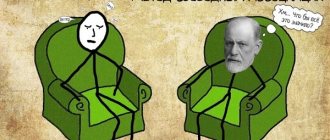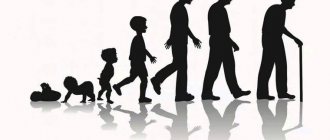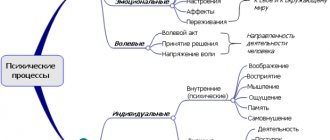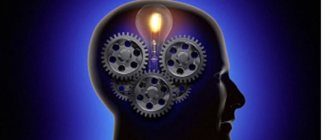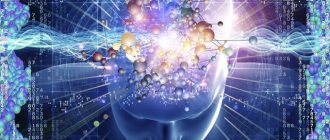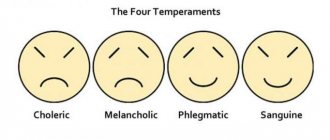What is imagination
By definition, imagination in psychology is a process in which images appear in the subconscious that are closely related to life experience, fantasy and way of thinking. It helps to imagine the consequences of certain actions, as well as outline a plan of action in an unclear situation.
According to scientists, imagination is one of the types of brain activity in which new additional neural connections are formed. We can also say that this is a process of transforming reality, creating images associated with it, processing the resulting practical, intellectual and sensory experience. These images are bright, original and at the same time truthful.
Imagination can be called a way of understanding the world around us. It leaves an imprint on our consciousness. Thanks to this, you can not only replay what happened recently, but also imagine what will happen in the future. You have the opportunity to imagine non-existent or absent objects and mentally use them in your consciousness.
It is interesting that even the most pragmatic, skeptical people have imagination. They may live by logic, ironclad principles and rules, but will still dream or think creatively.
Voluntary and involuntary imagination
Imagination is connected in various ways with the will of a person, on the basis of which voluntary and involuntary imagination are distinguished. If images are created when the activity of consciousness is weakened, the imagination is called involuntary . It occurs in a half-asleep state or during sleep, as well as in certain disorders of consciousness. Voluntary imagination is a conscious, directed activity, performing which a person is aware of its goals and motives. It is characterized by the deliberate creation of images. Active and free imagination can be combined in various ways. An example of voluntary passive imagination is daydreaming, when a person deliberately indulges in thoughts that are unlikely to ever come true. Voluntary active imagination manifests itself in a long, purposeful search for the desired image, which is typical, in particular, for the activities of writers, inventors, and artists.
Recreative and creative imagination
In connection with past experience, two types of imagination are distinguished: recreative and creative. Recreating imagination is the creation of images of objects that were not previously perceived in a complete form by a person, although he is familiar with similar objects or their individual elements. Images are formed according to a verbal description, a schematic image - a drawing, a picture, a geographical map. In this case, the knowledge available regarding these objects is used, which determines the predominantly reproductive nature of the created images. At the same time, they differ from memory representations in the greater variety, flexibility and dynamism of image elements. Creative imagination is the independent creation of new images that are embodied in original products of various types of activities with minimal indirect reliance on past experience.
Realistic imagination
Drawing various images in their imagination, people always evaluate the possibility of their implementation in reality. Realistic imagination occurs if a person believes in the reality and possibility of realizing the created images. If he does not see such a possibility, a fantastic imagination takes place. There is no hard line between realistic and fantastic imagination. There are many cases where an image born of a person’s fantasy as completely unrealistic (for example, the hyperboloid invented by A. N. Tolstoy) later became a reality. Fantastic imagination is present in children's role-playing games. It formed the basis of literary works of a certain genre - fairy tales, science fiction, “fantasy”.
With all the variety of types of imagination, they are characterized by a common function, which determines their main significance in human life - anticipation of the future , an ideal representation of the result of an activity before it is achieved. Other functions of the imagination are also associated with it - stimulating and planning. The images created in the imagination encourage and stimulate a person to realize them in specific actions. The transformative influence of imagination extends not only to a person’s future activity, but also to his past experience. Imagination promotes selectivity in its structuring and reproduction in accordance with the goals of the present and future. The creation of imaginative images is carried out through complex processes of processing actually perceived information and memory representations. Just as is the case in thinking, the main processes or operations of the imagination are analysis and synthesis. Through analysis, objects or ideas about them are divided into their component parts, and through synthesis, a holistic image of the object is rebuilt. But unlike thinking in the imagination, a person more freely handles the elements of objects, recreating new holistic images.
This is achieved through a set of processes specific to the imagination. The main ones are exaggeration (hyperbolization) and understatement of real-life objects or their parts (for example, creating images of a giant, genie or Thumbelina); accentuation - emphasizing or exaggerating real-life objects or their parts (for example, Pinocchio’s long nose, Malvina’s blue hair); agglutination - the combination of various, real-life parts and properties of objects in unusual combinations (for example, the creation of fictional images of a centaur, mermaid).
19.
Depending on the content of the activity, imagination is divided into technical, scientific, artistic and other varieties, determined by the nature of human work.
The artistic imagination has predominantly sensory (visual, auditory, tactile and other) images - very bright and detailed. Thus, I. Repin, painting the picture “The Cossacks write a letter to the Turkish Sultan,” wrote: “Their humor and noise make my head spin.” Flaubert said that he felt the sharp taste of arsenic in his mouth when he described the scene of Madame Bovary's suicide. Thanks to the brightness of sensual images, the artist and writer seem to directly perceive what is depicted in their works.
Technical imagination is characterized by the creation of images of spatial relationships in the form of geometric figures and structures, their easy dissociation and combination into new combinations, and imaginary transfer of them to different situations. Images of the technical imagination are often combined in drawings and diagrams, on the basis of which new machines and new objects are then created.
Scientific imagination finds its expression during the creation of hypotheses, conducting experiments, generalizations to create concepts. Fantasy plays an important role in planning scientific research, constructing an experimental situation, and predicting the course of the experiment. When building a scientific system, imagination is needed to complement the missing links in the chain of facts that have not yet been determined.
Fantasy is of great importance for the fruitful creative activity of a scientist. Without imagination, his work can turn into a pile of scientific facts, the accumulation of his own and others’ thoughts, rather than real progress in new inventions, ideas, and the creation of something fundamentally new in science.
A special form of imagination is a dream.
A dream is the process of a person creating images of the desired future. A dream is a necessary condition for the embodiment of creative ideas, when images of the imagination cannot be realized immediately for objective or subjective reasons. Under such circumstances, the dream becomes a real motivation, a motive for activity, thanks to which it becomes possible to complete the work begun. Without a dream, D.I. Pisarev noted, it would be impossible to understand what motivating force makes a person begin and complete extensive and tedious work in the field of art, science and practical life.
A dream is an element of scientific foresight, forecasting and activity planning. This function is convincingly manifested in artistic, creative activity, government, and social development. A striking illustration of this is the works of Jules Verne, in which he brilliantly foresaw the works of future technical thought - a submarine, a helicopter.
Dreams can be real, valid and unreal, fruitless. The effectiveness of a dream requires a condition for the embodiment of a person’s creative plans aimed at a real transformation of reality. Such dreams, in a certain sense, are the driving force behind a person’s actions and deeds, giving her more purpose in life, helping her fight difficulties and resist adverse influences.
Dreams can be empty, fruitless, “Manila”. Then they disorient a person, deprive him of a vision of real life prospects, push him onto the path of illusory satisfaction of his mental preferences, and make him unable to withstand the adversities of real life.
Only an active, creative dream has a positive impact on a person’s life; it enriches a person’s life, makes it brighter and more interesting.
Abilities are the psychological characteristics of a person that ensure success in activity and communication and the ease of mastering it. Let us pay attention to the most important aspects of this definition. This:
• individual characteristics, i.e., what distinguishes one person from another;
• not physiological (tall, long fingers, etc.), but psychological characteristics;
• not any individual psychological characteristics, but only those that correspond to the requirements of a certain activity, because there is no concept of abilities abstracted from the type of activity.
Consequently, abilities must always be assessed in connection with the activity, the process of mastering it and the results achieved.
Types and levels of abilities. Types of abilities according to their focus, or specialization, can be divided into general and special, theoretical and practical, educational, interpersonal and subject-related. General abilities are a prerequisite for the comprehensive development of the individual.
General abilities are understood as a system of individual psychological characteristics of a person, which explains the relative ease and productivity in mastering and carrying out various types of activities and communication. These are mental activity, a high level of analytical and synthetic activity, concentration, developed memory and speech, accuracy and subtlety of hand movements, high learning ability, efficiency, etc. In foreign psychology, these abilities are referred to as intelligens, which is equivalent to the expression “mental abilities” .
Special abilities are understood as a system of individual psychological characteristics of a person, which determines a person’s success in special types of activity and communication, where a special kind of inclinations and their development are necessary. These are linguistic, mathematical, technical, literary, stage, sports, musical, etc. abilities.
Theoretical abilities determine a person’s inclination to abstract logical thinking (theoretical scientists, philosophers), apractical abilities underlie the inclination to concrete practical actions.
Learning abilities influence the success of pedagogical influences, the formation of personality traits, and the acquisition of knowledge, skills and abilities.
Interpersonal abilities are the abilities to communicate and interact with people, and subject-related abilities are associated with the interaction of people with nature, technology, sign systems, artistic images, etc.
Inclinations are the capabilities with which a person is born. Without appropriate inclinations, the development of abilities is impossible, but the presence of inclinations is not always a guarantee that a person will demonstrate abilities. Inclinations are not ready-made abilities, but only an innate predisposition to their development, which can only manifest themselves under appropriate conditions; these are only possible future abilities.
Inclinations contain opportunities for the development of abilities in the process of training, education and work, but they do not contain abilities and do not guarantee their development; this is only one of the conditions for the formation of abilities.
Thus, the inclinations should be understood as the primary, natural basis of the ability, not yet developed, but making itself felt during the first attempts at activity.
Soviet psychologists (L.S. Vygotsky, A.N. Leontiev, S.L. Rubinstein) believed that motives and emotions, like mental and volitional processes, are formed throughout childhood, as a result of the child’s mastery of the experience of previous generations and the assimilation of developed a society of moral norms and ideals. As a result of such assimilation, the child acquires a unique system of standards of values, comparing observed phenomena with which he evaluates them emotionally as attractive or repulsive, as good or evil, as beautiful or ugly. Features of emotional development in infancy: - the basis for the development of emotions is made up of primitive emotions caused by organic reasons; - socially conditioned forms of emotional experiences are formed in the process of communication between an infant and adults; - in situational and personal communication, the child experiences joy from friendly attention to himself, dissatisfaction with the lack of communication; - in situational business communication, the child displays pleasure from joint manipulations, joy from successes and rewards, resentment and anger from reproach; - the prerequisites for higher feelings are formed - love and sympathy for loved ones. Features of emotional development at an early age: - emotional experiences are short-term, unstable, expressed violently, children are very impressionable, their behavior is impulsive, emotions act as motives for behavior; — further socialization of emotions occurs, since experiences are associated with the results of human activity, and the child masters ways of expressing them; - higher feelings develop, among which sympathy, sympathy, pride and shame occupy a special place; — the inclusion of words in emotional processes rearranges their course and, together with the establishment of a connection between feeling and idea, creates the prerequisites for their regulation. Features of emotional development in preschool age: - the child masters social forms of expressing feelings; — the role of emotions in the child’s activities changes, emotional anticipation is formed; - feelings become more conscious, generalized, reasonable, arbitrary, non-situational; - higher feelings are formed - moral, intellectual, aesthetic. By the age of four, a child may have a sense of humor. Such children, as a rule, are gentle and friendly towards others. A sense of humor must be developed and used for the purposes of moral education. It should be taken into account that in primary and middle preschool age, children most easily perceive the comic in the behavior of animals (especially cubs), fairy-tale characters, peers, and more difficult in the behavior of adults, which is a model for them. Bad mood in children of primary preschool age often occurs when their usual living conditions change, for example, when entering kindergarten. The child's self-service and independence skills make it easier to get used to. The whole life of a child of early and preschool age is subject to his feelings. A preschooler's feelings are involuntary. They flare up quickly and go out quickly. Stormy fun often gives way to tears. He still cannot control his experiences. A child’s mood largely depends on relationships with adults and peers. By the beginning of preschool age, a child arrives with a relatively rich emotional experience. He usually reacts quite vividly to joyful and sad events, and is easily imbued with the mood of the people around him. His expression of emotions is very spontaneous; they are violently manifested in his facial expressions, words, and movements. Under favorable conditions, a preschool child intensively develops practical skills, mental and artistic abilities, feelings and emotions, develops moral qualities of the individual, and develops character traits. Children's knowledge of themselves, understanding of the emotional state and actions of other people leads to a feeling of sympathy, respect and empathy, which is an indispensable condition for live communication with the outside world. The child is, as it were, at the mercy of external emotional impressions and spontaneously arising feelings; he is easily attracted to something, but also easily distracted; his feelings quickly arise and just as quickly disappear. He reacts very emotionally to what is happening, but his emotions are unstable. During development, changes occur in the emotional sphere of the child. His views on the world and relationships with others change. The child’s ability to recognize and control his emotions increases, but the emotional sphere itself does not develop qualitatively. It needs to be developed. Thus, we can conclude that the education of a child’s feelings, which begins from the first years of his life, is the most important pedagogical task.
3
Functions of the imagination
The importance of imagination is difficult to overestimate. Like any other mental process, it has a number of functions:
- Cognitive. This is a function of both thinking and imagination. Helps broaden your horizons, obtain new information and knowledge, and draw up a plan of action in an unfamiliar situation. Teaches a person to be guided by guesses, reasoning and considerations.
- Prediction function. A person can imagine what will follow his actions. This type of imagination is involved in the formation of dreams and daydreams.
- Understanding. It manifests itself in the ability to assume what another person feels and experiences in a given situation, what emotions and sensations he or she has now. This type of imagination is somewhat similar to empathy. It allows you to look into the inner world of your interlocutor and understand what worries him at the moment.
- Protection. When a person plays out a situation in his mind, a possible outcome of events or the consequences of his actions, he can prevent troubles and protect himself from problems.
- Self-development. This function of imagination helps to fantasize, come up with something new, and create.
- Memories. Images from the past emerge in the subconscious.
Not every person has all the functions of the imagination. Their set depends on character, behavior, personal qualities.
Imagination in psychology
Imagination is the process of understanding the world around us. The outside world seems to be imprinted in a person’s subconscious. Thanks to this, a person is able to remember ancient and recent events, program, and imagine the future. This process is often called the ability to imagine absent objects in one’s mind, hold their image, and manipulate it in consciousness. Sometimes it is confused with perception, but they are really two different mental processes.
Imagination has the ability to create images based on memory, and not on information from the outside world. It is less real because it has a component of fantasy and dreams. Even the most pragmatic, skeptical, boring people have imagination. It is impossible to assign a person who has completely lost such a function. The behavior of these people is governed by their principles, logic, facts, they always do everything according to the rules. But to say that they have no creative thinking at all or that they never dream is very wrong. It’s just that this is the type of people in whom these processes are not sufficiently developed or they do not use them, or do not know how to use them. Often such people have a monotonous typical life, which is repeated the same way every day, and they act according to a certain algorithm, believing that they do not have time for more. In fact, it is a pity for such people, because their life is boring, they do not use the abilities that are given to them by nature. Creative imagination makes people individual, unique individuals.
Imagination as a mental process has certain functions that help a person become special.
The cognitive function is contained in expanding a person’s horizons, acquiring knowledge, constructing human behavior in an uncertain situation, guided by guesses and considerations.
The prediction function assumes that the properties of imagination help a person imagine the final result of an incomplete action. It is this function that contributes to the formation of dreams and daydreams in people.
The function of understanding is reflected in a person’s ability to guess what a person is currently experiencing, what emotions are overwhelming him, what feelings he is experiencing. Similar to this function is the state of empathy, when a person is able to penetrate into the world of another and understand what worries him.
The protection function assumes that by predicting future events, thinking about the course of actions and the consequences of these actions, a person can prevent troubles and protect himself from possible problems.
The function of self-development is reflected in a person’s ability to fantasize, invent and create.
The function of memory is expressed in a person’s ability to remember past events and recreate images of the past in his head. It is stored in the form of images and ideas.
The above functions are not always fully expressed in all people. Each personality is dominated by a certain function, which often determines the character and behavior of a person. To understand how images and ideas are created, it is necessary to trace the main ways of their creation. Each path is a complex multi-level mental process.
Agglutination is the creation of unreal, completely new, fabulous objects or phenomena that appear under the influence of the properties and appearance of some existing object, evaluating and analyzing the properties of which a person creates an object similar to it. That is, there is an initial object on the basis of which a prototype is formed. This technique is very popular in creating fairy tales or myths.
Emphasis is the process of fixing on one dominant characteristic highlighted in some object (person, object, activity, phenomenon) and exaggerating it. Artists often use accentuation in their works to create cartoons and caricatures.
Typification is the process of identifying the main characteristics in several objects, and creating from them an image that is completely new, but contains a piece of each of them. Using this technique, literary heroes and characters are created.
All of the above imagination techniques are actively used in psychology, creativity, and even scientific activity. For example, in medicine, new drugs are created based on existing ones. Also, modern technology, electronics, gadgets, inventions were developed on the basis of previously existing knowledge, schemes, theories and skills. By collecting the most important information from them and processing it, scientists get a completely new product. If people lacked imagination, humanity would not be able to progress in all areas and activities.
Imagination as a mental process involves the creation of new images based on existing existing experience. The ideas manifested in images in a person’s head have not yet begun to be realized, do not exist, but there is a possibility that in the future they can be brought to life. This process is based on the reformulation of the subject’s information and impressions. The more the situation seems incomprehensible and complex, the more the imagination process is involved. This process is of considerable importance in human professional activity. It also greatly influences feelings and emotions, and plays a big role in personality development.
In the creative and work process, imagination allows the individual to regulate and manage her activities, as well as control her speech, emotions, attention and memory. Helps create and use images of reality. It improves a person’s psychological state, prevents stress and depression. With the help of imagination, an individual is able to plan his future activities in his mind by manipulating images. Imagination and individuality are criteria for assessing a person’s talent and abilities, which is important in work life.
A person reflects the surrounding reality mainly in a figurative way. An image is a non-static phenomenon; it tends to constantly change. This process has a dynamic connection with the objects of the surrounding reality. Consequently, imagination is not some kind of abstraction, but a concrete process associated with the real mental activity of the subject. This activity is also dynamic in nature.
Imagination is the process of self-knowledge of a person, the disclosure of his abilities, other people and the world around him, and the events taking place. This is a special form of the human psyche, occupying a place between perception, memory and thinking processes. Visual-figurative thinking and imagination complement each other; imagination is its basis and makes it possible to show resourcefulness in an unfamiliar situation, to find a solution to a problem without using any action.
Types of imagination
The most basic types of human imagination are passive and active. Each of them is divided into subgroups. Among them are voluntary, involuntary, creative, reproductive imagination, etc. Let's take a closer look.
Passive
Such imagination may have a purpose. It can be regulated and directed using consciousness and willpower. It can also be involuntary, that is, working at the subconscious level.
Creating images
A person creates images in the imagination in several ways:
- Agglutination. The qualities and parts of individual objects are combined into a single whole. Examples: centaur, fairy-tale hut on chicken legs, seaplane, snowmobile.
- Emphasis. Part of the object is divided into separate parts. A good example is caricatures in which the artist highlights a certain feature.
- Hyperbolization. Involves reducing, enlarging, or shifting individual parts of the selected object. Here you can also remember fairy tales, for example, about dragons with several heads.
Another way to create images in the imagination is typification. It is considered the most difficult. Imagine any picture. Contemplating it, you draw in your subconscious the image that the artist conveyed. Or take, for example, a book. The author describes in it the features of the main character. Thanks to this, you can imagine how he looks, thinks, behaves. It is as if you are transported into the world around him.
Imagination. General characteristics, types and forms of imagination.
Imagination is a special form of the human psyche, standing apart from other mental processes and at the same time occupying an intermediate position between perception, thinking and memory.
. Techniques of creative imagination.
The techniques of imagination are
- agglutination (translated from Greek - gluing) - parts of two or more objects, processes are taken and combined, “glued together” so that the image of a new object is obtained (centaur). This is how some mechanisms and machines are combined nowadays.
- analogy - its essence lies in the fact that an image is built that is somewhat similar to a really existing thing, a living organism, an action. Based on the principle of analogy, a special field of knowledge and engineering arose - bionics.
Hyperbolization - increasing or decreasing an object, as well as changing individual parts.
Schematization - individual ideas merge, differences are smoothed out, and similarities appear clearly.
Typification is the selection of the essential, which stands out in significant images.
Sharpening is emphasizing any individual characteristics.
Types of imagination
There are active, passive, recreative and creative imagination.
Active imagination forms images according to
desire of the subject, associated with some unrealized human needs. It is directed to the future and is associated with the volitional decision of creative
and personal problems. Examples include:
— the imagination of an artist pondering projects for future works in his studio;
— the imagination of a general designer dreaming of a new type of aircraft;
— a group procedure of “brainstorming” when searching for and developing an idea in a scientific laboratory, when from the totality of the participants’ imagination processes, what can be feasible emerges.
Passive imagination forms images spontaneously, “of course.” These images are not intended to be realized. It can manifest itself in hypnotic states, dreams, daydreams and delusional states. Most often, this type of imagination is focused on the psychological repression of negative emotions or the preservation of positive ones, i.e. plays the role of psychological self-defense. A person, as it were, compensates for that part of his everyday life that turned out to be unrealized for some reason (due to his own indecision, opposition from opponents, lack of necessary information). Passive imagination in most cases replaces a person’s need to act.
Recreating (reproductive) imagination manifests itself in situations of recreating the image of an object that actually existed in the past, but was presented verbally, in diagrams, drawings, sketches. For example, recreating in one’s imagination fragments of the Battle of Borodino of 1812 based on L. Tolstoy’s novel “War and Peace” and bringing the image to life in the form of creating a corresponding panorama. This type of imagination is constantly exploited in the activities of the commander: when preparing an attack on enemy positions, he, looking at a map of the area, recreates a picture of the future battle. The investigator of the prosecutor's office cannot do without a recreating imagination: having arrived at the scene of the incident, he mentally draws the image of the criminal's actions. It is this image that follows
is being developed as one of the hypotheses for solving a crime.
Creative (productive) imagination forms images that have no prototypes in the real world (images of a centaur, spider-man). Of course, these images are based on life experience and acquired knowledge. A model of a future situation, phenomenon, object is formed in a person’s consciousness based on the existing
ing elements. The difficulty lies in combining these elements into a single chain of causal relationships.
This type of imagination is most characteristic of those who are focused on the future and take an active life position. It is the creative imagination
N. Copernicus, who created the image of infinity and population of worlds in the Universe, refuted the Aristotelian paradigm of the finitude of the world, served as the starting point for the development of new astronomy and physics in the works of J. Bruno, G. Galilee. Note that during the scientist’s lifetime there were no telescopes. The only “tool” that made it possible to look into the distant worlds of the Universe was imagination, based on observation, intuition and the desire for knowledge.
Forms of imagination
The formation of images of the imagination can be carried out in various forms: thought experiments, fantasies, daydreams, daydreams.
A thought experiment is a cognitive process through which a proactive reflection of reality is carried out in the human mind. It is built like a real experiment, but deals exclusively with an ideal “model - image” of a real object, which is subjected to various mental actions described earlier (see subsection 6.1.2). This form of imagination is often used in the early stages of designing organizational, technical and economic systems, when real experiments are impossible due to lack of time, limited material resources, or are associated with danger to the lives of people involved in the development of systems.
Fantasy is a product of the imagination, almost completely divorced from reality, but in principle does not exclude a possible transition to reality. It changes the picture of reality reflected in a person’s consciousness, helps to form a new look at everything that is established and traditional. This is the innovative power of fantasy, its progressiveness. It generates human creative activity and brings the future closer. A striking example is the science and technology fiction of J. Verne, who predicted the appearance of television and submarines long before their invention.
Dreams are deliberate passive imagination associated with unfulfilled human needs and aimed at a distant unreal future, into a world imagined by the individual. In dreams there is no will of the individual. It is believed that dreams indicate the presence of some defects in personality development: lack of will, poor social
adaptability, dependency, extreme indecision, passivity, self-doubt, isolation. Such an individual searches in vain for silence, comfort,
protection from the external world alien to him. Dreams replace reality for him, from which he seeks to escape. They distract from unfulfilled hopes, life shocks, and soften the everyday oppression of heavy thoughts.
Dreaming is a passive, unintentional form of imagination caused by a person's emotional relationship to an experience. It is hypothesized that dreams complete the construction of imaginary images, the formation of which began in the waking state. The physiological basis of dreams lies in the active interaction of limbic, brainstem and neocortical formations during the REM sleep phase.
Awareness and subjective experience of a dream usually occurs immediately (or within a few minutes) after a person awakens from the REM sleep phase. In the dream images, in the most incredible plot, objects of various natures (events, processes, objects, people, animals) are intertwined, relating as to long-gone years,
as well as the events of the day. And all this is accompanied by sensory and emotional experiences.
It has been established that the “theme” of dreams is determined to a large extent by the individual personal characteristics of a person, his lifestyle, professional activities and, most importantly, the state of his mental and physical health.
The last factor allowed Z. Freud to argue that in the waking state a person cannot become aware of himself, since his internal censorship prevents this. In a dream, this censorship is weakened, and in the form of dreams, something that was not missed by consciousness during the waking period enters the human consciousness. Dream images reduce the tension accumulated during the day and represent a unique mechanism of human psychological defense.
Functions of the imagination
Imagination “penetrates” human life and activity through a number of functions: pragmatic, psychotherapeutic, psychodiagnostic and cognitive.
The pragmatic function is manifested in the use of images of the real world formed in the process of imagination in solving practical problems that arise in various spheres of human activity. Examples of the implementation of the pragmatic function of imagination can be:
- transition from fantasy on the theme of “the beam of engineer Gorin” to the everyday reality of laser beams, which have found application not only for destructive, but also for creative purposes (telecommunication systems, medical equipment);
— group searches for solutions to complex problems using “brainstorming” technologies, which involve the formation of a collective image of the imagination from fragments of individual images of the imagination, formed independently of each other;
- the ideal image of a particular politician (company, country) perceived by the population, formed by the media, on the basis of information dosed by topic, sign, volume and according to the principle “it’s not enough to be good, you have to seem like one.”
— early mobilization of muscle energy in athletes preparing for important competitions at the international level.
The psychotherapeutic function of imagination is the regulation of mental processes, states, emotions and physiological processes through various types of psychological technologies. In particular, in psychoanalysis, this function is focused on a “breakthrough” into the subconscious of clients and the development of “health legends” in them based on the formation of corresponding imaginary images in them using special techniques.
The role of this function is significant in the psycho-correction of erroneous actions such as the “phenomenon of failure”, committed by specialists when performing highly responsible operations related to ensuring the safety of people. Errors arise due to distorted virtual images of the imagination about the current states of controlled objects.
For example, about 30% of landings of aircraft with the landing gear not extended are explained precisely by virtual
The psychocorrectional function is designed in the cases described above to destroy virtual images of the imagination, transforming them into images of perception and representation of the real states of controlled objects.
The psychodiagnostic function uses images of the imagination as signals reflecting the properties of a person’s personality and his current mental states. At the same time, projective type tests are widely used. According to the phenomenon of the projection mechanism, a person in his imagination tends to attribute his personal characteristics to other people. In other words, the products of an individual’s imagination reflect his psychological characteristics. So, looking at the same picture, one person sees gloomy motives in it, while another discovers something promising in it. It is likely that the first one has a pessimistic
a mystical character trait, and the other an optimistic one.
The cognitive function provides control over the processes of perception, thinking, attention, memory and speech by associating them with images formed in the imagination. One should expect an acceleration in the growth of the role of imagination in the structure of cognitive processes. First of all, this will affect management areas, regardless of their nature. For example, technologies for managing macroeconomic processes are currently being developed on the basis of virtual ideas that arise in humans about their current states.
Ticket number 11.
Previous14Next
Didn't find what you were looking for? Use Google search on the site:
What does imagination give to a person?
So, we found out what imagination is and what functions it plays. But why do you need it personally? There are several points:
- helps in communicating with other people;
- makes it possible to visualize the goal;
- promotes the development of creative talents;
- participates in decision making and creation of new ideas;
- helps you mentally recreate an image of an object or phenomenon that you have never seen.
Plus, imagination is used in making predictions and action plans for the future. It is needed in all areas of activity, especially in those that cannot be fully automated. We are talking about design, research work.
Does a child need imagination? The answer is clear: yes. Without it, full development is impossible. The first few years of a child's life explore the world around him. And if for some reason his imagination does not work at full strength, the formation of important abilities is inhibited.
The imagination developed in childhood will help an adult to become creative in the future, develop creative skills, and learn to find an unusual way out of a difficult situation. And this will be useful in life.
Essence and mechanism of action
Imagination is closely related to memory, attention, and thinking. Formed as a result of the emergence of social consciousness, to which a person turns in a problematic situation. Ability refers to cognitive processes that reflect objective reality. The basis of reflection is images of perception, memory, and representation.
If thinking explores the world in a general way, imagination allows you to create specific forms. The performance creates full-fledged pictures, based on reality or generated by fantasy. An individual invents without having any initial data, imagines phenomena that he has never seen. Intelligence is associated with imagination. The higher the level of intelligence, the more active the work of mental processes.
The essence of imagination is to create new images based on existing ones. The intensity and completeness of the result depends on experience and knowledge. Imagination arises in the process of work when the need to predict actions arises. By imagining images, an individual goes beyond reality, anticipates the result of work, and revives memories.
How to develop your imagination
Psychologists have identified a number of techniques for developing imagination.
In adults
The main thing is to be ready to experiment, not to be shy and not afraid of mistakes. There are many ways:
- Visualization. You need to mentally reproduce the appearance of an object, location or action. Start with simple tasks. For example, look at what lies in front of you. Then close your eyes and imagine this object in detail.
- Reading. This method is related to the previous one. Visualization is also needed here. It's just much more difficult to make it. You will have to remember several characters, images, landscapes at once. And after that, look at their participation in the plot. All this will help you see the full picture. And by the way, reading is much more interesting than watching movies. In the case of reading, no one limits your imagination and imagination.
- Associations. Every adult has associative thinking. Most likely, when you hear the word “green,” you think of grass and trees. And with the word “orange” - about an orange.
- Creation of unusual animals. This is a great way to develop your creative imagination. Let it be, for example, a cat dog. Of course, they don’t talk about it in a biology textbook. But you'll have fun. This exercise is suitable for both adults and children.
- Art. Exhibitions or master classes will make up for the lack of imagination. By observing other people, you yourself can easily create an unusual idea or at least get inspired.
- "Box". Here you will have to take an example from the cartoon character SpongeBob. Remember your favorite activity? He sat in the box and turned on his imagination. No, don't think that you need to do the same. Although children can try. Walk into an empty room and mentally design the interior. Next time, rearrange it, etc. This way you will improve your imagination and perception.
Stages of imagination development
Imagination is not an innate quality, and it can be developed
However, imagination is not an innate quality.
Its development occurs gradually, in the course of obtaining certain ideas that serve as the foundation for the creation of new images.
The development of imagination is promoted by personal self-improvement, education, training of memory, thinking and feelings.
It is difficult to limit the stages of imagination development by age category, since it depends on individual characteristics.
Based on some regularities, we can say that for the first time imagination is realized through perception. For example, it is difficult for a small child to imagine the plot of a fairy tale, but it is easier for him to imagine the situation happening to himself.
The connection between imagination and perception also manifests itself when the child transfers the received ideas into his games, mentally changing the appearance of objects. The work of imagination in childhood is always associated with activity, in this case – play.
At the stage when a child learns to speak, he begins to form not only images, but also more complex ideas. He has to find words to express what exists in his imagination.
It becomes easier for the child to separate the characteristics of an object from itself and use them to express other ideas. Images spontaneously arise and are combined in a child’s imagination.
At the next stage of imagination, the child can already deliberately recreate images. He begins to control his imagination during games and creative activities, imagining a goal or plot.
At the onset of school age, imagination rises one more level. Making efforts to complete learning tasks, the child actively recreates images and uses existing ideas.
Example from life
I enjoy reading. Imagination helps you immerse yourself in the story. Even seemingly tedious descriptions of the area become much more interesting. I try to see the landscape through the eyes of the author, hear sounds, feel the wind or the scent of flowers.
The same goes for heroes. I try to imagine not only their appearance, but to monitor how their behavior and thinking changes in different situations. Thanks to this, after reading the book, it seems that I have visited this book world.
